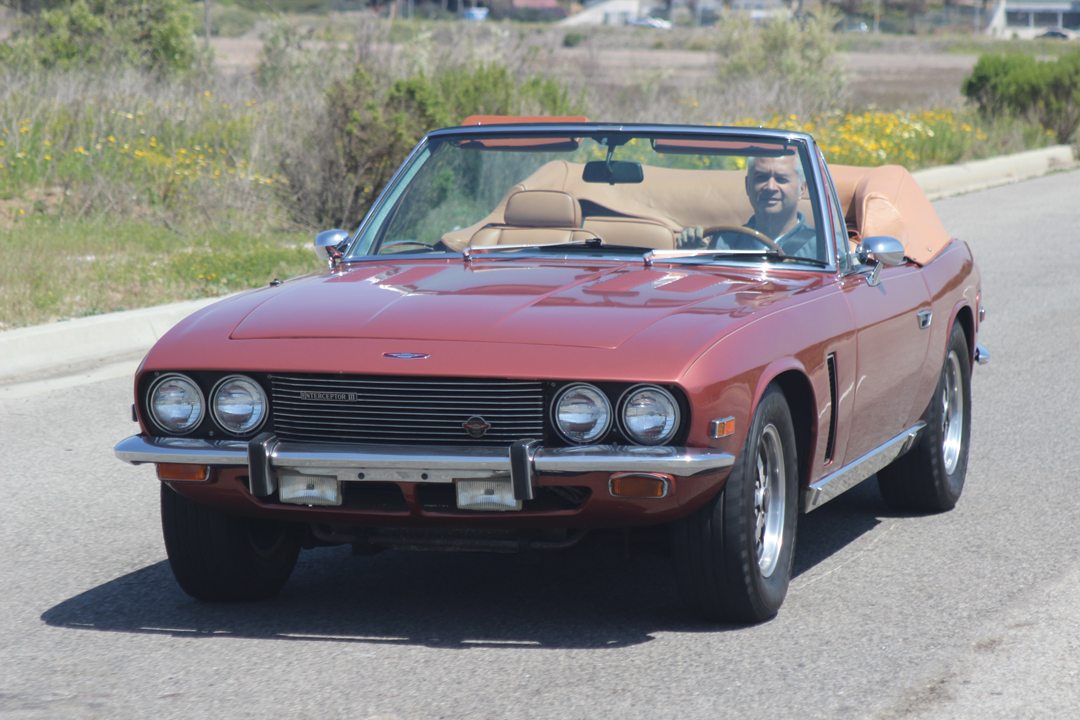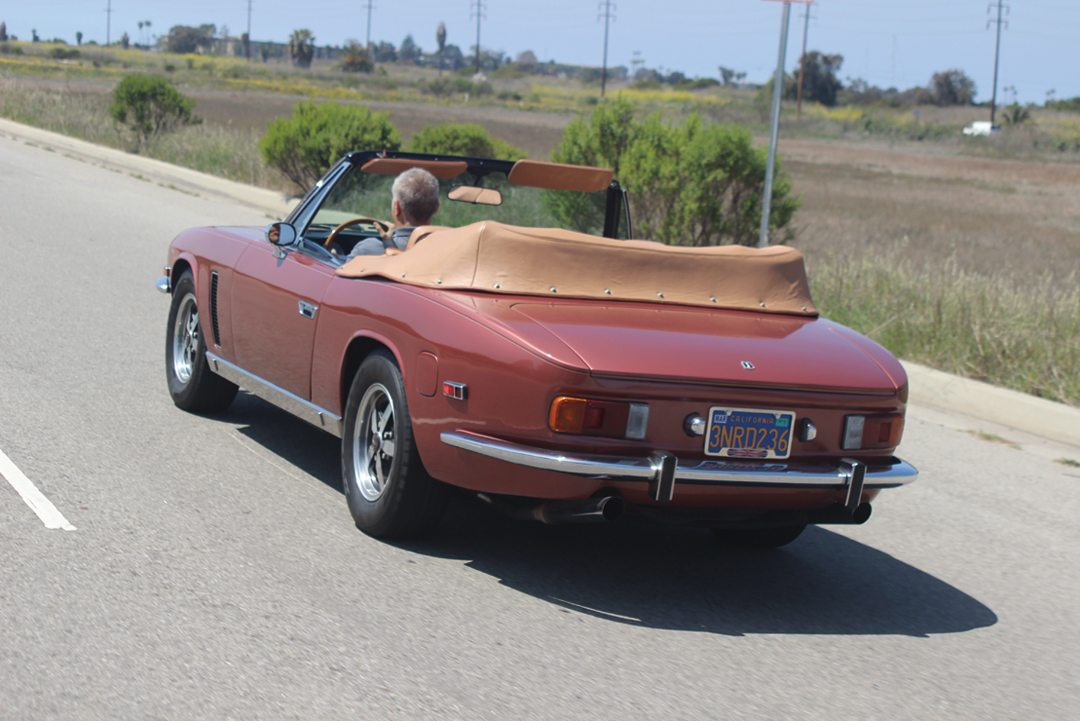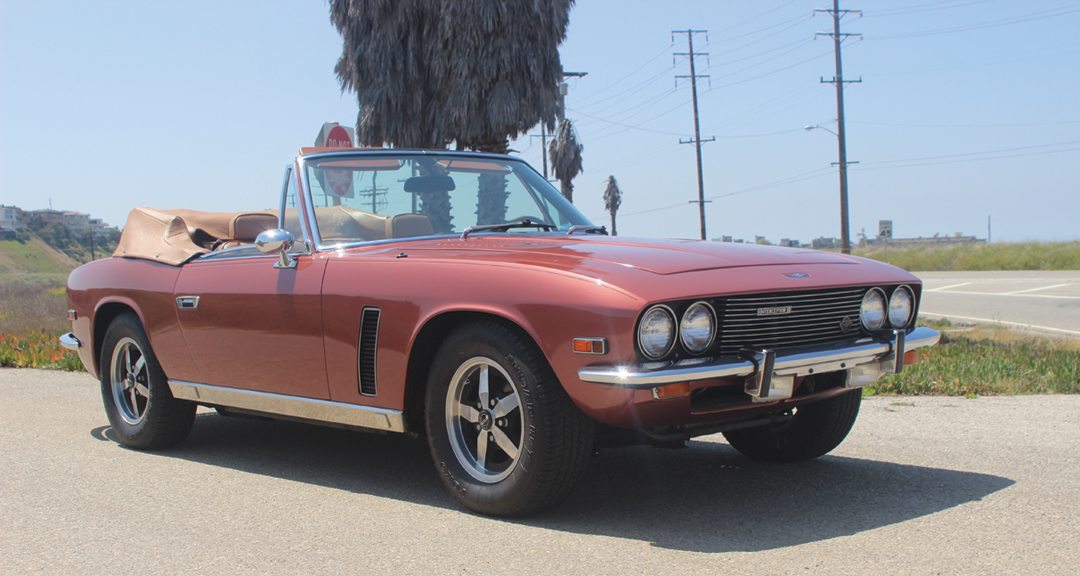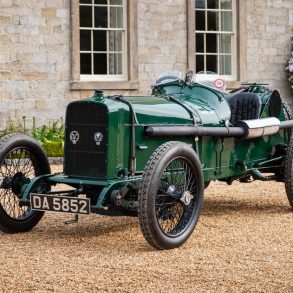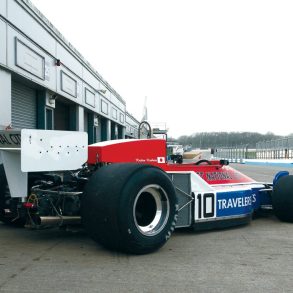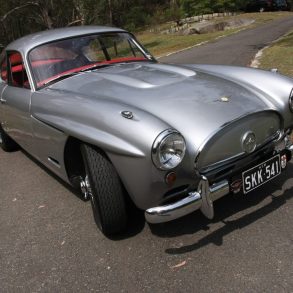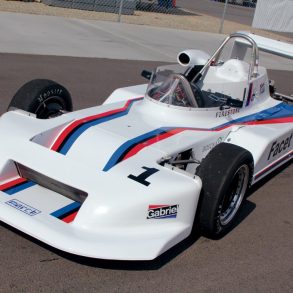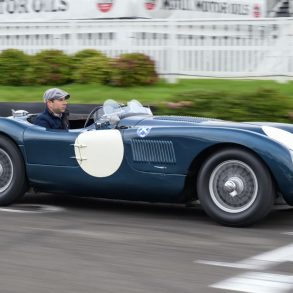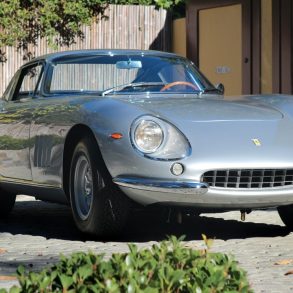llan and Richard Jensen started business manufacturing auto bodies under contract for Austin. The firm also made bodies for the Volvo P1800, Sunbeam Tiger and Austin-Healey in addition to the first Interceptor built from 1950 to 1957 with various engines under an attractive glass fiber body.
The second iteration of the Jensen Interceptor was hand-built at the Carters Green Factory in West Bromwich from 1966 to 1976 and represented an ill-timed effort to capture the hearts and minds of the luxury GT marketplace. Unlike its predecessor, the new model was clothed in steel using a handsome body designed by Carrozzeria Touring with the earliest examples built by Vignale before Jensen took over serial production. The styling was heavily influenced (if not outright borrowed) from the Brasinca Uirapuru, a limited production GT coupe manufactured in Brazil, and featured a distinctive large rear window that also served as the tailgate.

The Interceptor suffered from poor timing in that it soon ran headlong into the oil crisis of the early seventies and the market for a bespoke GT from England decreased substantially with greater competition from the Jaguar XJ-S and other competitors from the Continent. It is best remembered, however, for the most unique variant of the range which was one of the first vehicles produced with four-wheel drive with the manufacture of the Jensen FF (Ferguson Formula) which was hailed at the time as a revelation with its attendant traction control and mechanical anti-lock brakes from Dunlop Maxarat. With an increased length by 5 inches over the Interceptor, the FF looked virtually identical despite the added length and was identified by an additional side vent and swage line on the forward wings. With only 320 FF variants produced (195 Mark I, 110 Mark II and 15 Mark III) it is unquestionably the most desirable and complex car of the range.
The 1975 Mark III Convertible that we drove was purchased by a Lotus, Jensen and Avanti dealer from Southern California who kept it from new until his death last year at the age of 97. As one would expect from a car with such ownership it was well-maintained and cared for and presents the perfect opportunity to sample what these cars would have been like when new. The Convertible is even rarer than the FF with only 267 examples produced from 1974 with most offered for sale in the American market. This particular example features a striking leather interior with an attractive wooden dash and switchgear that would be welcome in any of the other more well-known offerings from the United Kingdom like Rolls-Royce, Bentley, Jaguar and Aston Martin.
In fact, this car is the perfect alternative to a drophead from Newport Pagnell or Crewe with the added benefit of a lower initial purchase price and easier (and less expensive) maintenance afforded by its Mopar engine. Performance is superior to the Aston Martin DB6, similar to the Jaguar E-Type and just under the Porsche 911S from the standing start to 60 mph and better than all in the quarter-mile save the DB6. Unfortunately, this performance came at the price of mileage in the range of 14 mpg at a time when the cost of gas was rising without check.
The first impression upon settling into the well-cushioned leather seat and surveying the instruments set in the wooden fascia is that the Interceptor is very much on par with an Aston Martin of the period save for the added cachet of the David Brown nameplate. Every surface is made of quality materials and it seems as if that quality has withstood the passage of almost four decades none the worse for wear. It seems to be a much larger car than it is (five inches shorter than the Chevrolet Camaro) which is likely due to the long hood, high doors and the bustle created by the folded top.
While the leather and wood interior trimmed with Wilton wool carpets literally screams Britannia, the first turn of the key brings an instant reminder that under the hood rests an engine with its roots firmly planted in America. The idle is utterly without tension and it seems as if hardly any effort would be required to reach the 135-mpg top speed. Use of the Chrysler engine and TorqueFlite transmission dictate that the driving experience is very familiar in the way that any large American V-8 with an automatic is eerily similar despite what the badge on the grill says. The engine still allows for acceleration that would be quick even by modern standards and the reserves of torque are fun to play with from the stoplight on Lincoln Boulevard in Marina Del Rey, California. Despite the urge afforded by the engine, the entire package is very relaxed and would be the perfect carriage for a trip up the Pacific Coast Highway with a long-legged and blonde haired companion seated alongside.
The interior truly is the epitome of Seventies luxury and the seating position is comfortable and cosseting for long-distance travel. The brakes are soft in that overly boosted fashion of most American cars and the overall driving experience is a unique blend of Britain and Detroit with a touch of Italian style thrown in for good measure. For what it is, the Interceptor is the perfect alternative to its much more expensive cousins and is, perhaps, better suited for daily or occasional use than any of them. The rub is that as they were less desirable from new, and more affordable in the days since it is now difficult to find one in the condition of our test car. If such an example, however, finds its way across your path this Anglo-American hybrid with Italian styling is as fine a GT car as you could hope for.
JENSEN INTERCEPTOR
Production 1966-1976
Number 6,408 Produced
Layout Front Engine with Rear Wheel Drive
Engine 6276 cc (383 cubic inches) V-8, 7212 cc (440 cubic inches) V-8
Bore x Stroke 107.95 mm x 85.72 mm
Compression Ratio 10:1
Power 330 HP
Torque 410 lb-ft
Transmission 4-speed manual 3-speed automatic TorqueFlite A-727
Wheelbase 105 inches
Length 186 inches
Width 69 inches
Front Track 56.1 inches
Rear Track 56.9 inches
Height 53 inches
Weight 3,990 pounds
1974 Jensen Interceptor III
Body 2+2 convertible
Wheelbase 105-in
Track 56.1” (front), 56.9” (rear)
Weight 3,999-lbs
Suspension (Front) Independent by dual wishbone, (Rear) Live axle.
Engine 7.2-liter Chrysler RB Series V-8
Carburetion 4-barrel downdraft
Compression 8.2:1
Transmission 3-speed, automatic Chrysler TorqueFlite A727
Brakes- 4-wheel, ventilated disc
Turning Circle 38-ft
PERFORMANCE
Top Speed 135 mph
0-60 mph 7.5-sec
Average Fuel Consumption
7.8-mpg
VALUATION
Price at launch: $15,000
Price excellent $48,750
Price good $36,000
Price average $23,100
Price project $12,600


